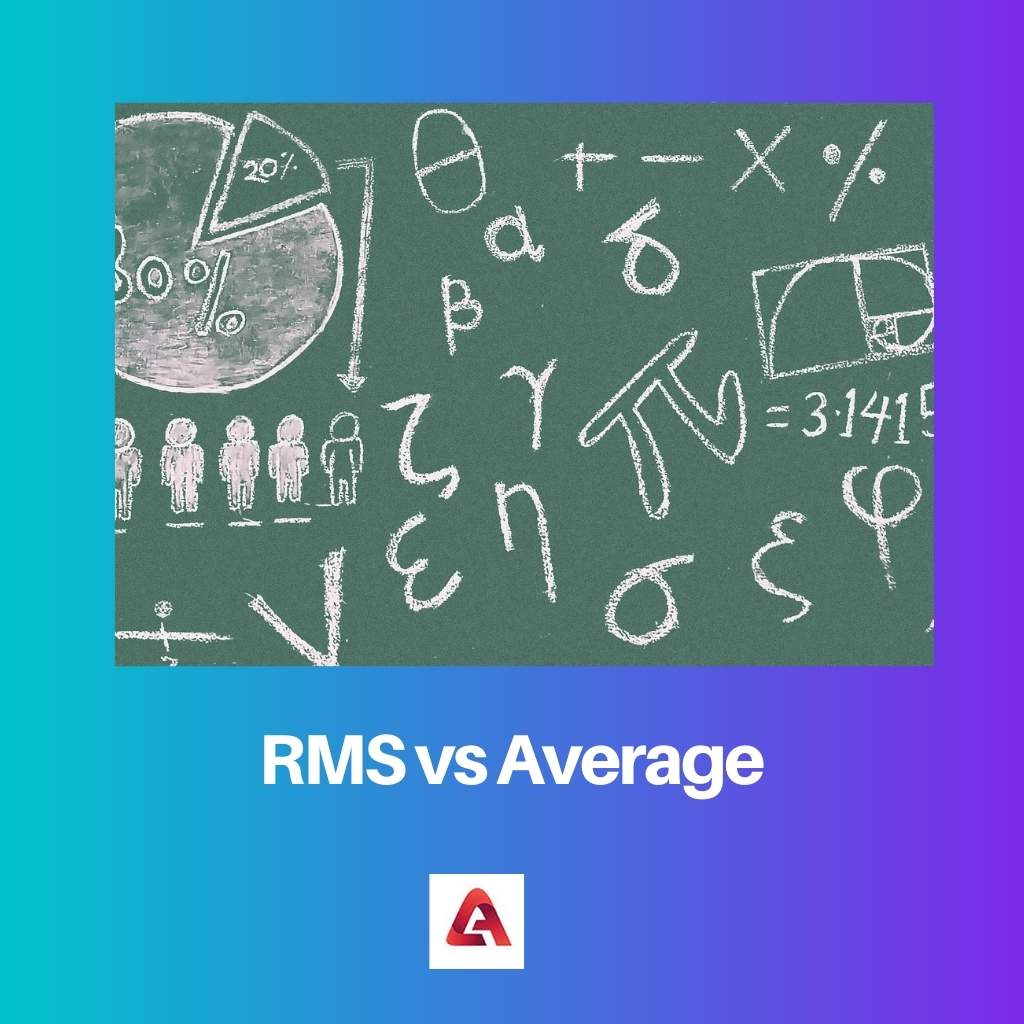Mathematics uses the terms root-mean-square (RMS) and average to define the overall character of a group of numbers.
Key Takeaways
- RMS (Root Mean Square) represents the square root of the mean of the squared values in a dataset.
- Average, or mean, is the sum of values in a dataset divided by the number of values.
- RMS is beneficial for analyzing varying quantities, while the average is more appropriate for constant or linear quantities.
RMS vs Average
In mathematics, root mean square (RMS) calculates the square root of the average value of the squares of a group of numbers. RMS helps determine the effective value of an AC wave shape. Average refers to the mean value of a set of numbers. It is calculated by dividing the sum of all the values by the number of values present.

The root-mean-square is a mathematical term representing the square root of the mean square. The arithmetic means square of the squares of a group of values is known as the mean square.
It is a way of representing a big number of numbers with a single one. Every digit given in the data set is represented by a single number.
Comparison Table
| Parameters of Comparison | RMS | Average |
|---|---|---|
| Also known as | Effective value | Mean value |
| The formula for Sine Wave | VRMS = VPK/√2 | VAV = 0 |
| The formula for Full rectified wave | VRMS = VPK/√2 | VAV = 0.637 VPK |
| The formula for Half rectified wave | VRMS = VPK/2 | VAV = 0.318 VPK |
| Degree of usage | Most in Mathematical fields | Most in Electrical physics fields |
What is RMS?
If the function has a continuously changing value, RMS is defined as the integral of the squares of the instantaneous values squared throughout the cycle.
If the estimate does not fit the data well, it will have a large root-mean-square deviation (RMSD).
The RMS voltage can also be defined as the integral of the squares of the instantaneous values during a cycle for a constantly fluctuating voltage.
If a periodic function has a period, then its RMS is equal to the RMS of the first period. Using the RMS value of a pattern composed of equally spaced observations, we can approximate the RMS value of a non-stop characteristic or signal.
What is Average?
The sum of all the numbers in a collection divided by the total number of numbers in the collection is the arithmetic mean or average.
To determine the average age of a class, the teachers gather the pupils’ ages and average them out.
Averaging all these values yields a single number that may be used to represent everything.
As a result, there are several different mathematical definitions of mean, including arithmetic, geometric, harmonic, and weighted.
Main Differences Between RMS and Average
- The average, on the other hand, can be stated in a variety of ways, including the mean, median, or mode.
- RMS is critical in electrical engineering and signal sciences, although the average is common in statistics.



